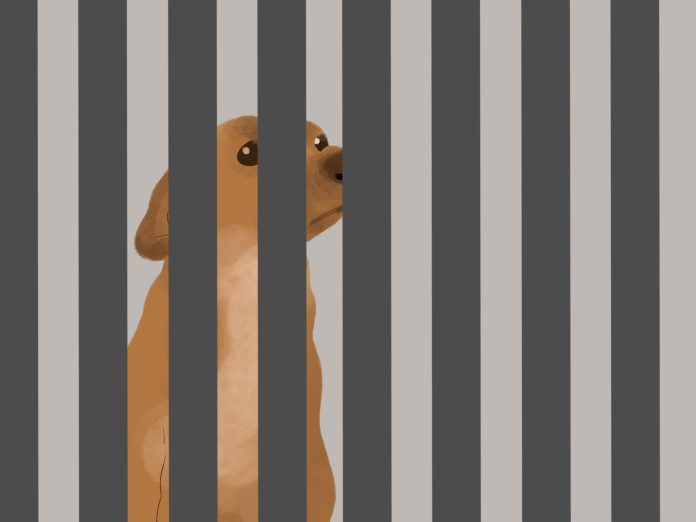Janice Luong
Opinions Editor
Humans have interacted with dogs for more than 15,000 years, but it wasn’t until the 19th century that people began to classify and record dog breeds. The moment breeding became a hobby is the moment we began to exploit our furry friends for-profit and ceased to protect the welfare of man’s best friend.
Dogs are monoestrous breeders, meaning, they only have one breeding cycle a year (although it varies between breeds). However, an overbred dog occurs when a bloodline is continuously mated with disregard for the quality of the breeding stock. It is a practice of negligence and exploitation.
Overbreeding endangers and harms the mother and her puppies, and can lead to the development of health issues. Some health issues that develop in overbred dogs are eye problems, respiratory issues (flat-faced dogs), joint issues, dystocia, and heart problems. This is not an exhaustive list, but these point out the common issues you’ll encounter if you own an overbred dog.
Some dog breeds that are overbred include (not in any particular order):
- Golden Retriever
- Yorkshire Terrier
- Pug
- Bulldog
- German Shepherd
- Beagle
- Dachshund
- Poodle
- Shih Tzu
- Boxer
In addition to greed, people breed dogs for superficial reasons like favoring a certain feature, trait, and/or behavior. No reason should validate this unethical practice of dogs.
Not only are there direct consequences, but there are other issues we should be mindful of. When there are more dogs than people adopting or buying, it creates a surplus. What do we do with an overpopulation of dogs? They end up in adoption centers and/or they get euthanized. Adoption centers are isolating and lonely, and that alone causes mental health issues for them. Dogs can develop anxiety and stress from being sheltered long-term.
Individuals who show off their dogs with some unusual feature are perpetuating and ignoring the issue. Breeders intentionally produce this type of “toadline bully” and label it as “unique” or “rare” when in fact, it’s a deformed dog suffering from health issues.
Breeding practices often go unregulated, and that needs to change. There was a “No Kill” Movement that began all the way back from the 1980s that advocated for not killing healthy dogs and cats in shelters. More than 6 million pets enter the shelter every year in the US and only 34 percent of dogs in shelters get adopted. We need to do more to promote adoption so we can help find a home for our furry friends. If we can’t stop breeders, we can at least control how we respond to the overproduction of dogs.
Dogs should not be bred for profit nor should they be exploited by greed. Mother dogs should not be forced to go through dangerous labor and hurt their body just because humans need them to create litter for sale.
Adopt, don’t shop.











